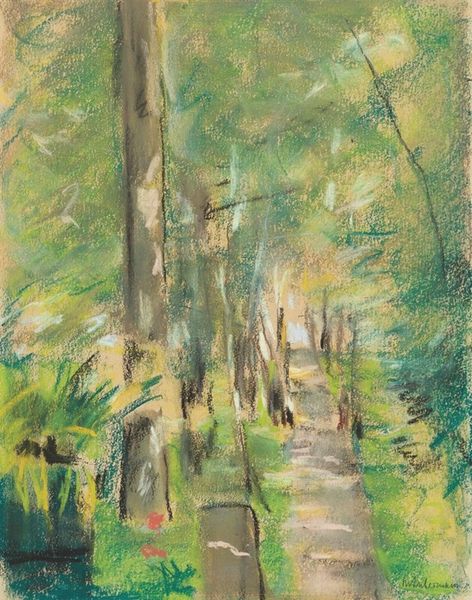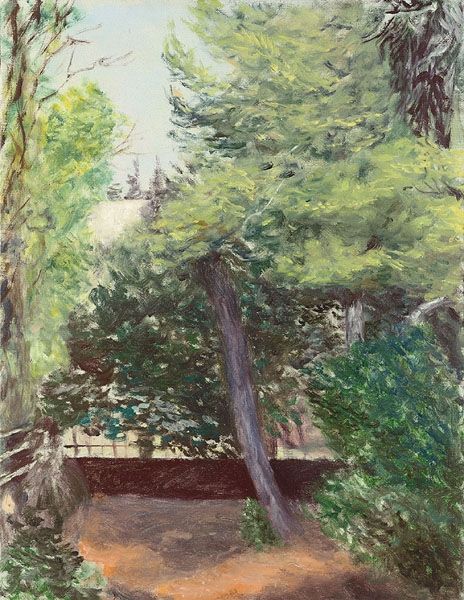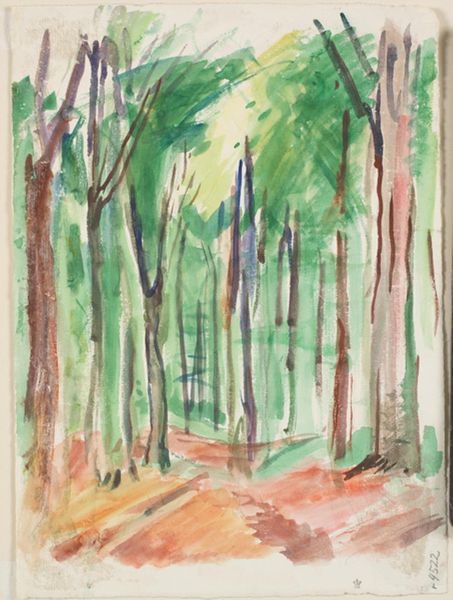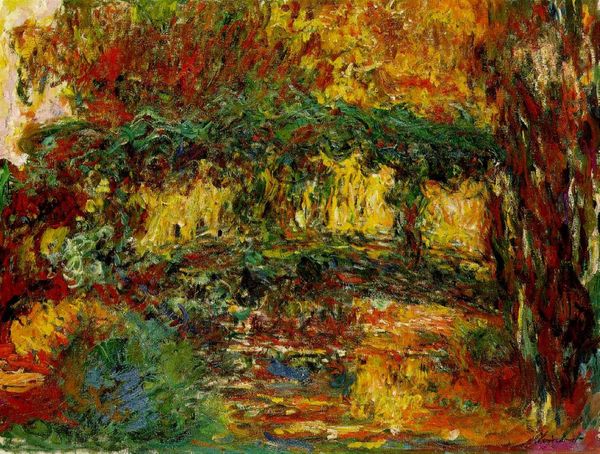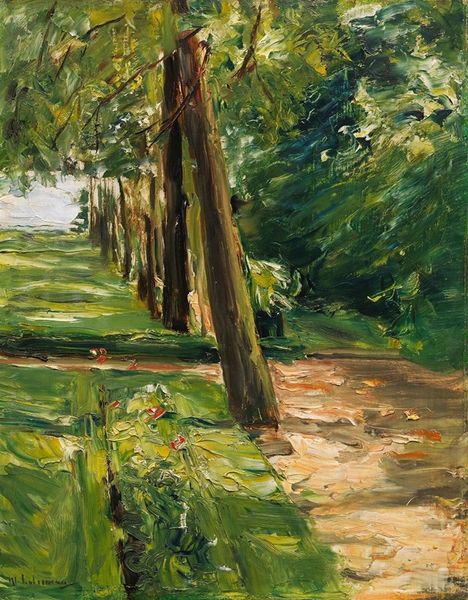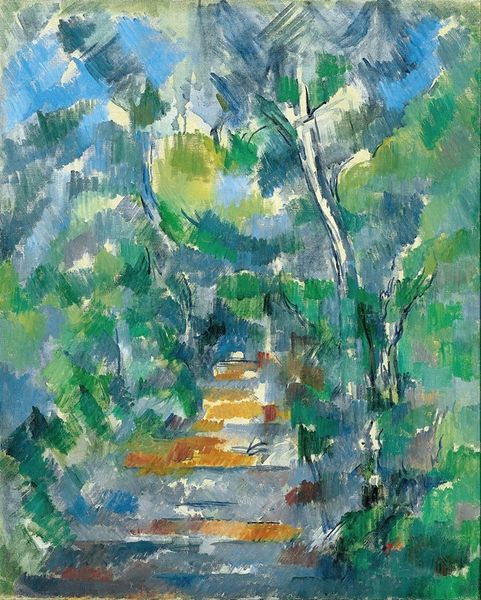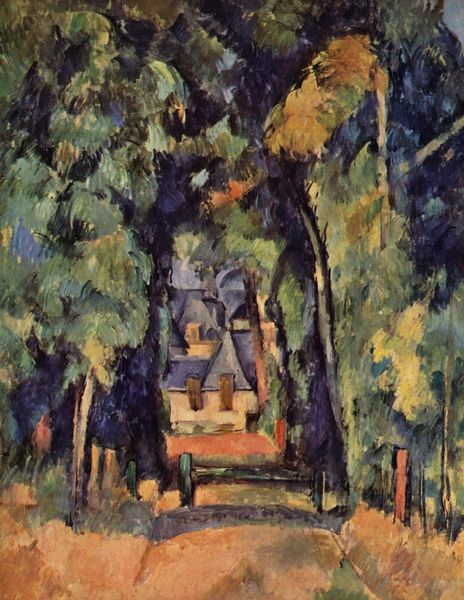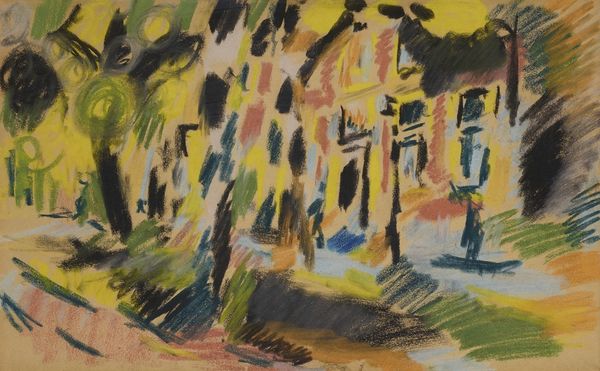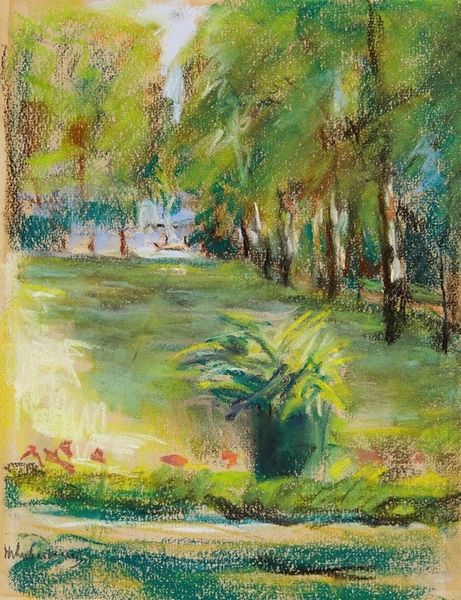
painting, plein-air, oil-paint
#
painting
#
impressionism
#
impressionist painting style
#
plein-air
#
oil-paint
#
landscape
#
impressionist landscape
#
oil painting
#
post-impressionism
Copyright: Public domain
Editor: Here we have Paul Cézanne’s “The Alley at Chantilly,” painted around 1888. It's oil on canvas and…it's such a lovely, serene scene. Almost like looking through a tunnel of trees. What stands out to you when you look at this painting? Curator: I’m immediately drawn to the repeated arch motif – the overarching trees echoing in the implied arches of the benches. Consider the arch as a symbol: It represents transition, a passage from one state to another. Here, do you feel Cézanne is inviting us to contemplate a transition of some kind, perhaps from the earthly to the spiritual, or even from the known to the unknown, given the receding perspective? Editor: That's a really interesting perspective. I was focused on the sort of flattened perspective, but I can see how the archways also create a feeling of depth. Do you think the colour choices also tie into that? Curator: Absolutely! Notice the greens and yellows intensify towards the ‘vanishing point’ of the alley, pulling us deeper into the scene. These are the colours we often associate with vitality and growth, and placed at the furthest visible location in the painting. Could these visual clues offer insight into Cézanne’s own pursuit of artistic innovation, striving toward something just beyond reach? Editor: It's fascinating how those choices of colour and shape invite so many interpretations. It definitely gives me more to consider about Cézanne's process. Curator: Indeed! Remember, visual symbols speak to our cultural memory as well as individual experience, creating layers of meaning to be uncovered and considered.
Comments
No comments
Be the first to comment and join the conversation on the ultimate creative platform.
